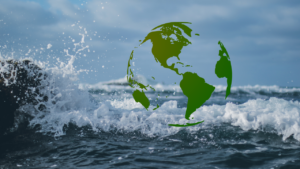Physical Address
23,24,25 & 26, 2nd Floor, Software Technology Park India, Opp: Garware Stadium,MIDC, Chikalthana, Aurangabad, Maharashtra – 431001 India
Physical Address
23,24,25 & 26, 2nd Floor, Software Technology Park India, Opp: Garware Stadium,MIDC, Chikalthana, Aurangabad, Maharashtra – 431001 India

CLAIM
‘Sea level rise is exaggerated’
FACT
Sea level rise is not exaggerated and is very much real. Human-caused rise in greenhouse gases and the subsequent global warming is leading to a rise of the global sea levels and that too at an unprecedented rate.
SOURCE OF THE CLAIM
We found the primary claim in a Facebook Video.
WHAT THEY SAY
Sea level rise is exaggerated. It is not happening and even if it is taking place, the rise is too insignificant to have any impact. This has been cited as proof by a section of people to stress that global warming is not taking place. Some others say that sea levels are actually not rising and, in fact, falling minutely.
WHAT WE FOUND
Sea level is regarded as the base for the calculation of depth and elevation on Earth. But regional sea level itself is calculated by comparing it to the adjacent land. Though the seas and oceans are a continuous bodies of water, various physical interruptions and currents, winds, variations in temperature, and gravity restrict the sea surface from being level in the truest sense.
Also, sea levels are not changing in a global uniform way, and while at specific locations the rise may be more than the global average in some other places the rate of rising may be lower than the global average.
The elevation of land similar to the sea may go through ups and downs over time. Sea level variations and land elevation variations are combined to calculate local mean sea level measurements. The average of the different heights of the ocean’s surface measured throughout the world gives us the global sea level.
Sea level is measured in two primary ways- using tide stations and satellite altimeters. While tide stations located in different parts of the globe provide information at a local level, satellite technology tells us the average height of the entire ocean or sea.
THE RISE
Since the industrial revolution, the global sea level has been rising at a greater pace and towards the late 20th century the rate of sea-level rise reached its fastest pace ever, according to tide gauge and satellite data.
The change in sea level since 1993 as observed by satellites:

In fact, in 2020, the global sea level reached a new record high. The rate of sea-level rise is also accelerating every year at a rate of about one-eighth of an inch (3.2 mm) per year. According to the latest research, by 2050, sea-level rise is projected to rise by a foot.
The graph, derived from coastal tide gauge and satellite data, shows just how much the sea level has changed from about 1900 to 2018:

Source: climate.nasa.gov
CAUSES
The rise in the emission of human-caused greenhouse gases is the main reason behind the generation of excess heat which is getting trapped in the atmosphere very close to the surface of the earth. The giant water bodies of the planet in the form of seas and oceans are absorbing more than 90 percent of this excess heat.

Seasonal (3-month) heat energy in the top half-mile of the ocean compared to the 1955-2006 average. Heat content in the global ocean has been consistently above-average (red bars) since the mid-1990s. More than 90 percent of the excess heat trapped in the Earth system due to human-caused global warming has been absorbed by the oceans. NOAA Climate.gov graph, based on data (0-700m) from the NCEI Ocean Heat Content product collection. Source: https://www.climate.gov/
This in turn is taking a toll on our seas and oceans. Global sea-level rise is primarily caused by two factors that are directly related to human-caused global warming.
EFFECTS
According to the World Meteorological Organisation’s (WMO) State of the Global Climate in 2021 report, sea levels along the entire Indian coast are rising at a faster rate in comparison to the global average.
With a rapid rise in sea level, waterlines are getting increasingly closer to human communities acting as launch pads for storms and floods. This is leading to the increased impact of tropical cyclones and storm surges besides gradual erosion of coastline and inundation of deltas. Resultant flooding is another point of concern as saline water is getting into agricultural fields and people’s homes, leading to long-term damages like a decrease in soil quality.
Some areas and road networks in coastal Indian cities like Mumbai, Kochi, Mangalore, Chennai, Visakhapatnam, and Thiruvanathapuram could be submerged by 2050 because of sea-level rise.
According to a projection by NASA, coastal areas of India will witness a sea level rise of 0.1m to 0.3m in the coming two-three decades.

Source: Times of India
(Created using an online visualization tool of the US space agency using projections from the latest report of the UN’s Intergovernmental Panel on Climate Change.)
Category: